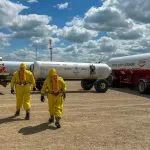
Water Security Agency says reservoirs in southwest Sask. likely won’t fill up
Most of Saskatchewan’s reservoirs are brimming with water — or will be — when summer arrives.
However, the Water Security Agency (WSA) said in an update Wednesday that six of 45 major reservoirs in the province probably won’t completely fill, and most of those bodies of water are in southwestern Saskatchewan.
That area was the most severely hit when regions of the province dealt with drought-like conditions in 2023.
In its release Wednesday, the WSA said 33 out of 45 major reservoirs are nearly full or are expected to fill, while another six are between 70 and 90 per cent full and still filling. The other six may not fill up as the spring progresses.


